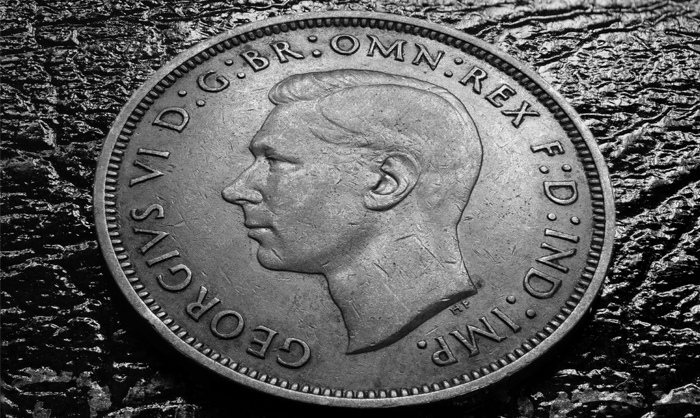Blogs › How WWII Changed Taxes
How WWII Changed Taxes

© HVDigital / Shutterstock
When World War II broke out on 1st September 1939, it wasn't long before everyone started feeling the financial pinch of the extra spending. Increasing the UK's military capacity through the rearmament programme had already cost £197 million before the war began.
The programme of rearming the forces had expanded in the 1930s, when the European powers realised the increasing threat Hitler posed to world peace. As storm clouds gathered over Europe, the British government increased its arms spending.
Income tax increase
The standard rate of income tax in Britain was increased to 27.5% in 1938 to help replenish the drained government coffers. There was a 41% surtax on people who had an annual income of more than £50,000. Around ten million people were paying direct taxation by this time.
Throughout the war, the British government further increased income tax to keep pace with the massive expense of the military campaign. In 1941, with general discontent among taxpayers, the treasury promised "tax credits" would help ease the financial burden.
At a meeting of the War Cabinet in February 1942, it was suggested that the collection of income tax from wage-earners was "causing dissatisfaction and unrest". The cabinet members discussed the public "resentment" against a system that many people viewed as being unjust.
It was reported that shipbuilders on the Clyde were planning to stop working overtime if the government didn't listen to their grievances. This would seriously impact the war effort. The workers' main objection was the way the taxation system worked.
Tax system "discouraged" workers
Tax based on people's earnings from April to September each year was deducted between January and June. The delayed collection of taxes meant employees in some industries were paying a high rate of tax during a period when their actual earnings were considerably lower.
It also meant people viewed tax as a debt that had to be repaid when some of them had ceased to earn wages at a taxable level. This included men called up into military service during the war who had ceased working in their regular job, but were still paying taxes from an earlier period.
The cabinet discussed how the tax should be collected immediately in respect of current earnings, rather than later on, when income may have dropped. MPs were told that a married man who had been earning £6 a week may suddenly find his income cut by 50% when taxation from the earlier tax period kicked in, leading to a decline in the family's standard of living.
In addition, married women were being asked to return to industry and earn a wage while the men were away at the front during WWII. The cabinet members agreed the current income tax arrangements were a "definite discouragement", as a large proportion of their earnings was taken in income tax if their husband had exhausted the benefit of personal allowances. It led to women paying more in income tax than men in many cases.
Calls for "fairer" system
The Minister of Labour and National Service, Ernest Bevin, said the issue needed "urgent examination". He called for a system whereby wage earners could budget on the basis of their weekly earnings, using a fair income tax system that ensured the tax was paid immediately, rather than in six to 12 months' time.
Subsequently, the PAYE taxation system was introduced in 1944, permitting employers to deduct tax from wages every week or month. Prior to this, tax had been collected only twice a year, or even annually in some cases. With millions of employees now paying income tax, the new scheme enabled tax to be collected more frequently and efficiently.
The economic problems faced by Britain at the end of World War II were more severe than those of 1918, when the Great War ended. The government adjusted the tax system as a means of aiding post-war economic recovery.
Post-war recovery
During the immediate post-war years, the programme of nationalisation, the establishment of the welfare state and the cold war kept expenditure almost at the wartime level. It took years for income tax to reduce back to lower rates.
In 1948, a government report suggested many steps were being taken to "prevent the development of a dangerous inflationary situation". It concluded everyone would "suffer as a result" if the nation's finances weren't managed better, adding, "It is therefore the duty of everyone to play his or her part in averting the danger.".
The report pointed out that "already, steps have been taken by high direct taxation on personal incomes". It also noted how "lower scale earned income" had been impacted by the introduction of PAYE tax and an increase in direct taxation.
The government managed a gradual reduction in the burden of direct taxation by introducing new taxes and increasing the effectiveness of existing ones after WWII.
Value Added Tax
This included the launch of VAT in 1973 to replace Purchase Tax, which had been introduced in 1940. The move anticipated Britain's entry into the European Economic Community, where other member countries had adopted a similar system of "turnover taxation".
WWII changed taxes significantly, shaping the system into the one we recognise today, 77 years after the end of the conflict. However, with talk of the dangers of inflation today, it seems some things never change!
DL Accounts will be remembering those who sacrificed their lives during times of conflict – we will be observing the two-minute silence as a mark of respect. Lest we forget.
Suggested Reading: The War Accountant.

